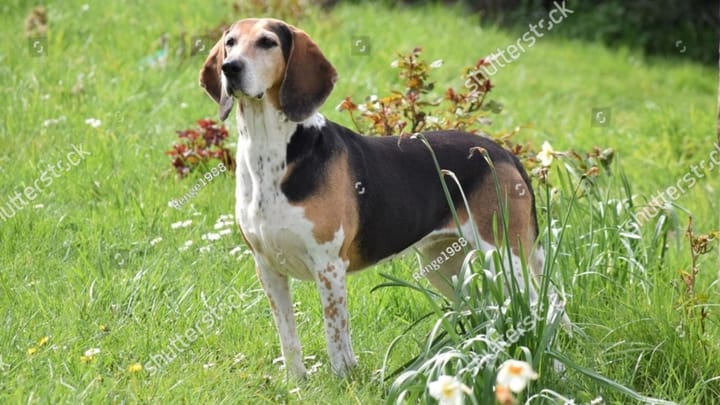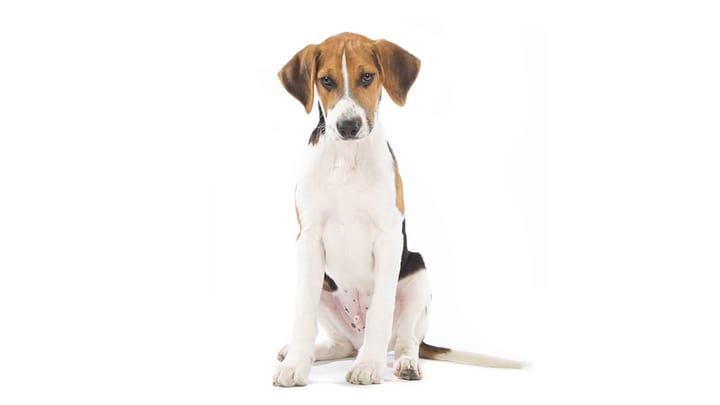Harrier


This English Foxhound-looking dog also resembles an elongated (and thus prettier), more delicate Beagle. But make no mistake, despite her sweet expression the Harrier is a powerful working dog accustomed to a great deal of exercise and outdoor time. While not as common as her aforementioned lookey-likeys, the Harrier is a friendly, upbeat sort and adores spending time with her family, whether they be human or her fellow workers in the hunting pack. In addition to her looks, personality, and strength, the Harrier boasts a fine singing voice, although it may not always be appreciated by the neighbours.
|
Life expectancy |
The Harrier has a life expectancy of between 11 and 13 years |
|
Temperament |
|
|
Size |
Medium
|
|
Adult size |
Female
Between 19 and 20 in
Male
Between 19 and 22 in
|
|
Adult weight |
Female
Between 55 and 66 lb
Male
Between 55 and 66 lb
|
|
Coat colour
|
White Red |
|
Type of coat
|
Short |
|
Eye colour
|
Brown
|
|
Purchase price |
The Harrier costs approximately 475£ |
The Harrier is little-known as a show dog and has not been recognised by the English Kennel Club since 1971.
More details about the Harrier
Harrier: Origins and history
The Harrier seems to have been with us for some while, although how long is not clear because older descriptions may refer to the foxhound (from whom she may be descended) and no definitive origin story exists. Alternative histories place her at the foot of the bed of the Bloodhound, Talbot Hound, and Basset Hound, or English Foxhound, Fox Terrier, and Greyhound. While she’s noted for sure from the 18th century, she may go back as far as Sir Elias de Midhope and his 13th century pack of hare dogs.
Physical characteristics of the Harrier
Nestling-in neatly on the menu between the smaller beagle and the larger English Foxhound, the Harrier is the perfect compromise between the two. She is more svelte than the larger breed and less blunt than the little beagle. Her face is pretty and expressive, not the saddest among hound-dog faces but certainly in that direction; her ear flaps are large relative to her slim skull, and invite brushing upon the beholder’s cheek. She’s long with a deep chest that rises dramatically to her tight belly. Her back is so straight you could set your new kitchen tiles by it. Her tail, which points to attention, is often white-tipped and embellished with grain-like tufts.
FCI classification of the Harrier
-
Group 6 - Scent hounds and related breeds
-
Section 1 : Scent hounds
Harrier: Characteristics
Harrier: Behaviour
Training a Harrier
Her independent nature can make her difficult to train, although she is eager to participate. If her needs are fulfilled, she will cooperate.
Harrier: Lifestyle
Breed compatibility Harrier
Harrier: Purchase price
£475 for Non KC Registered dogs.
Looking after a dog of this size typically costs between £60 to £90 a month, including food, medical/insurance, and incidental expenses.
Harrier: Shedding
Average
Harrier: Grooming
The Harrier’s glossy coat is tailor-made for outdoor work and adventure and requires only weekly brushing, and extra attention for the folds of her ears which may trap bacteria.
Harrier: Health
The life expectancy of a Harrier dog is approximately 12 years.
She is a solid working dog that should suffer minimal illness or damage if cared for.
Quite well, although extremes should be avoided.
Quite well, although extremes should be avoided.
Her high energy allows her to keep her shape.
- Hip dysplasia
- Eye trouble



